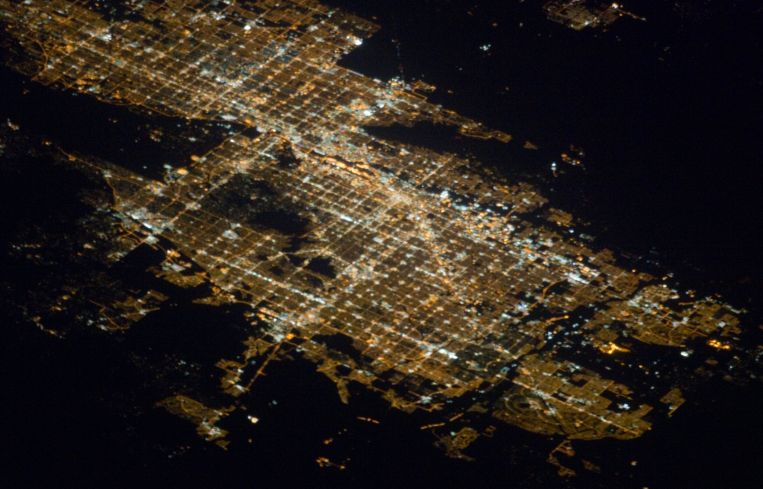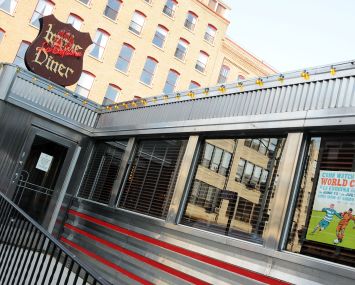National Industrial Real Estate Prices Climb 20 Percent, Sales Nearing $19B in 2022
Arizona and Other Secondary Markets Have Their Moment
By Mark Hallum May 24, 2022 4:44 pm
reprints
A backsliding economy and soaring inflation weren’t enough to slow record demand for industrial space nationwide in April.
The average national industrial rent hovered around $6.47 per square foot and vacancies remained at 5 percent in April, all while the construction pipeline had over 640 billion square feet of additional space in the works, according to a new report from CommercialEdge.
The lack of available industrial space is forcing activity to spill over into secondary markets such as Phoenix, Dallas and Columbus, Ohio, the report outlines.
And most firms offloading industrial real estate assets turned a hefty profit, with the national average sale price reaching $135 per square foot, 20 percent higher than 2021’s average. Industrial sales totaled nearly $19 billion year-to-date, according to CommercialEdge.
For comparison, average rent for industrial space clocked in at $6.45 per square foot in CommercialEdge’s report on February data, when availability likely was not greatly impacted by Russia’s war against Ukraine. February’s vacancy rate was 5.2 percent with 593 million square feet under construction.
But what seems to be an indicator of success for the real estate industry comes with its own set of struggles and growing pains. Ports in Southern California, Miami and the New York-New Jersey corridor continue to grapple with inventory and supply-chain pressures.
Southern California’s Inland Empire had a vacancy rate of only 3 percent in April, according to CommercialEdge, while Dallas and Phoenix had the largest volume of industrial space under construction.
With supply constrictions in coastal cities, industries have had little choice but to move inland, Peter Lewis, president of Wharton Equity Partners, told Commercial Observer in April.
The purchase of a 101-acre parcel by Wharton in Mesa, Ariz., on a major supply-chain route from the port of Long Beach, Calif., is just one way a shortage of available space is playing out in the desert, where Wharton plans to develop an 11-building, 1.5 million-square-foot industrial park.
But even in a vast place like Arizona, where state and federal governments own much of the available land, there could be a shortage of places to build, especially since what is available north of Phoenix is considered difficult terrain.
“Over the next number of years, I think that land is going to start getting gobbled up. At some point in the not-so-distant future, I think you’re going to see a coming shortage of developable land [in Arizona],” Lewis said. “[In California,] you have incredibly difficult zoning and approval processes, so the supply there is impossible. That’s why the Inland Empire has the highest rates and lowest vacancies in the country, because of the difficulty of getting things approved and a lack of land. So it is not really user friendly from a corporation standpoint.”
Nonetheless, the lack of infrastructure and existing assets in the West give Western states an advantage over those in the Northeast, Lewis explained, where antiquated hardware such as power infrastructure is built deeply into the industrial ecosystem.
The Inland Empire’s power grid may not be considered up to the task of supplying the industrial sector with electricity, however. In early April, Riverside County Supervisor Kevin Jeffries suggested upgrades may be necessary along a 15-mile stretch of the Interstate 215 corridor, the Riverside Press-Enterprise reported.
“[Southern California Edison] can no longer provide power — and some people applaud this — they can no longer provide power to the warehouses that are going in,” Jeffries said during a Board of Supervisors meeting. “One warehouse is 1.1 million square feet, and Target is preparing to move in, and they will have no power.”
In April, Dallas saw 52.67 million square feet under construction, and Phoenix saw 41.52 million square feet, CommercialEdge’s report stated. Phoenix had the equivalent of 14.6 percent of existing industrial stock under development.
With projects in the planning stages taken into account, CommercialEdge believes the total new supply in Phoenix might reach as high as 35 percent of current stock.
Mark Hallum can be reached at mhallum@commercialobserver.com.


